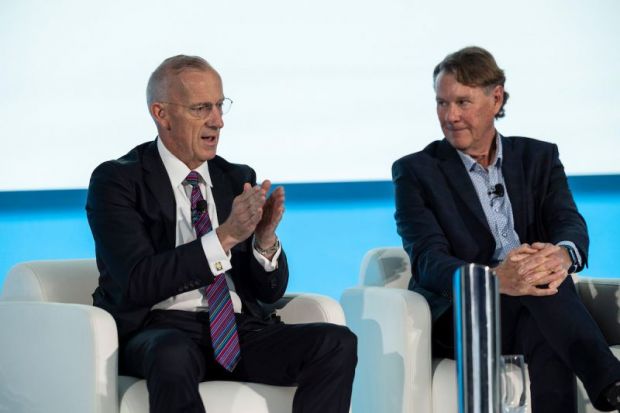Multidisciplinary research institutes are like living organisms, and university leaders must not be afraid to let parts of them die off, Times Higher Education’s World Academic Summit has heard.
Michael Spence, former vice-chancellor of summit host the University of Sydney, said successful multidisciplinary initiatives required funding, leadership and “questions that capture the imagination of the academic community in situ at the time”.
But the “really tricky issue” was knowing when research endeavours had reached their use-by date, said Dr Spence, now president of UCL. “How do you seed…a particular thematic initiative, encourage [it], water [it] a little bit, watch [it] grow and then let it die or kill it when it runs out of puff?” he asked.
Dr Spence said allowing things to “die naturally” was not necessarily the best approach. “Sometimes I think you should kill them,” he went on.
“You need to have clear time horizons and clear periods of review. There need to be points in which you say, ‘This was incredibly productive for a while. But…10 of the key players have left to go somewhere else, or funding has dried up, and we’re going to pull the plug.’ That’s not fatal to people if their identity is still in their faculty…because, of course, they’re doing other things as well.”
Dr Spence led Sydney when it hatched the Charles Perkins Centre, the university’s flagship multidisciplinary research institute. With a focus on chronic disease and seed funding of about A$400 million (£210 million) – some of it sourced from the sale of a donated Picasso painting – the centre now lays claim to some 1,100 staff, all of whom retain their substantive positions in their home schools or faculties.
Conceived a little over a decade ago, when academic director Stephen Simpson was lured to Sydney from a stellar research career in biological modelling and nutrition, the centre has spawned scores of research nodes in areas from exercise, sleep and Indigenous health to wearable technology and jet lag mitigation.
Professor Simpson told the summit that the centre, which now operates on core funding of about A$3.5 million a year, had already attracted well over A$100 million in philanthropic contributions because of its “large vision” and “endless sweet spots” for donors.
He said the centre’s “embryonic strategy” had centred around the research nodes. “These nodes came online, bringing in new members. Some of the nodes have since withered and died. It’s like apoptosis in a cell system. If they secure resources and retain interest amongst the members, then they stay alive, they grow, they amalgamate, and other things start to appear out of that network.
“I spent a lot of time going around the university in the first year, inviting people to come to us with a dream project – something that made a great deal of sense to them, and for which they knew they needed access to an expert mathematician or a composer or a clinician; it didn’t really matter what. We would provide a small amount of funding to hold the workshop, to develop the manifesto, to start seeking external funding; they became members of the centre through that process. And then we let the whole thing go.”
Professor Simpson said the demise of some of the nodes was just part of the process. “Academics are used to failing; we do it all the time. Providing it’s not managerially imposed, it will happen naturally.”





